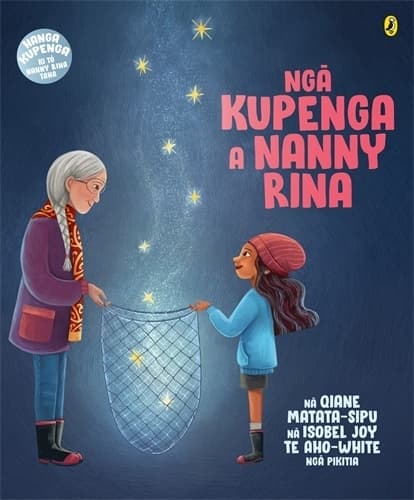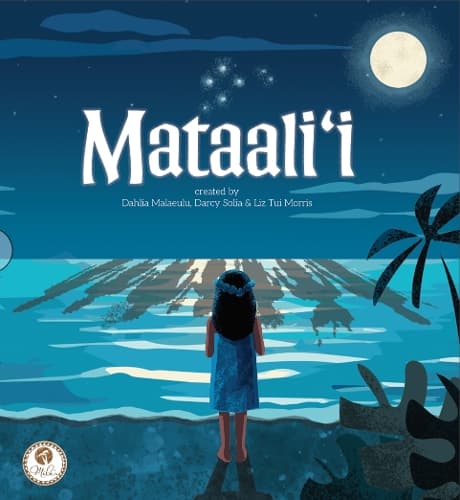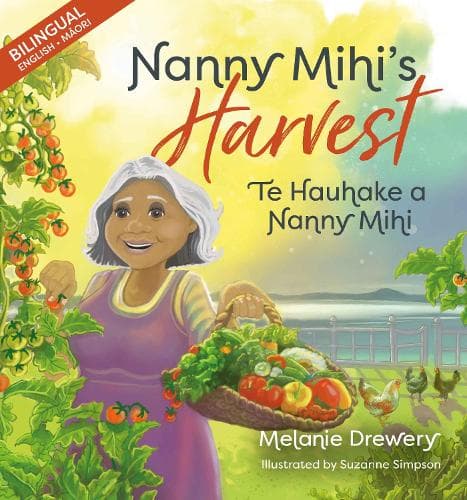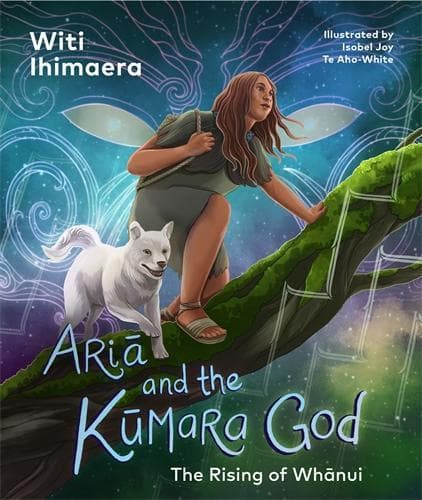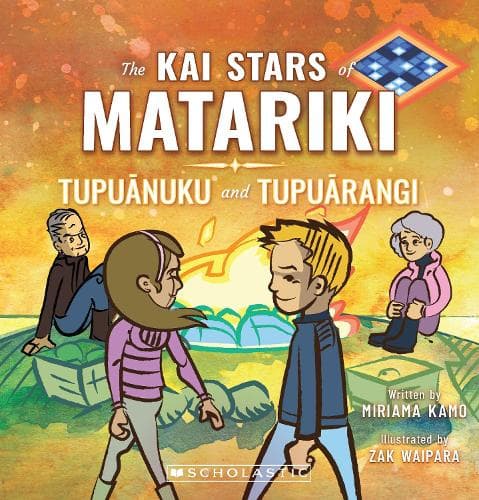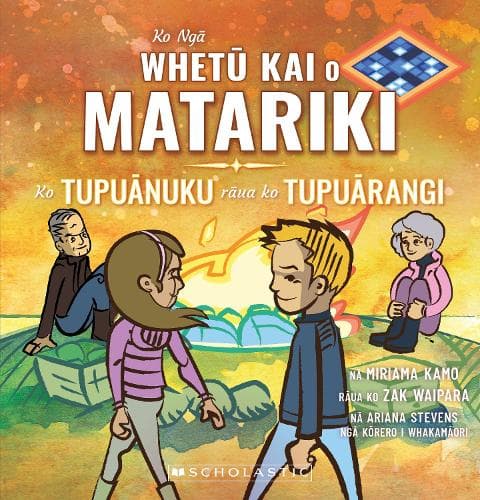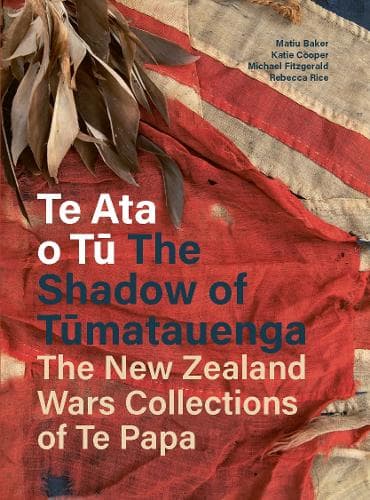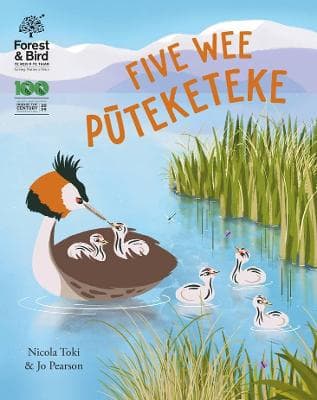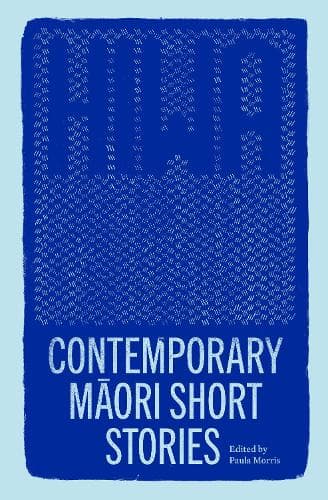Starry cluster of new pukapuka give a bigger picture on Matariki
Maatakiwi Wakefield (Kāi Tahu whānui, Te Ati Awa, Ngāti Toa, Ngāti Mutunga, Ngāti Raukawa, Ngāti Maniapoto) and Ngapiu Tainui Maclure (Kāi Tahu whānui, Te Rarawa), Māori Library Services at Christchurch City Libraries shine a light on the kaupapa behind the Matariki selection in this year’s Winter Reading catalogue.

Throughout June, the Māori Library Services team at Christchurch City Libraries celebrate and share their mātauranga about Matariki and Puaka. Providing mātauranga Māori based programmes, the team of four deliver community education, make school visits, curate resources, support whanau days on marae and in community organisations, run training and professional development across 22 libraries, and across Christchurch city and the Banks Peninsula.
They also contribute to the So Many Stories podcast on both Plains FM and the Christchurch City Libraries website.This year, Kaitakawaenga Maatakiwi Wakefield and Pou Kohikohinga (Māori Collections Specialist) Ngapiu Tainui Maclure have added one more star to this cluster of activities: leading the selection of Matariki books in Kete Books’ Winter Reading guide.
Their selection brings together 18 books from the more than 90 new titles submitted by publishers for this year’s guide. It includes books for children on Matariki – available in English and te reo Māori like Miriama Kamo’s The Kai Stars of Matariki, and the new adventure story Ariā and the Kūmara God by Witi Ihimaera. Dahlia Malaeulu’s Mataali'i a story rich in Samoan cultural values is here too. However, the selection also features books that weren’t specifically written or published for Matariki but which, through kaupapa and subject matter, connect to one or more of the nine Matariki whetū (stars).
‘We were thinking about helping people to look at the bigger picture and deeper meaning of Matariki,’ says Maatakiwi. ‘We’d like people to realise how interlinked and woven together everything is.’
Christchurch City Libraries has celebrated Matariki within its communities for more than 20 years. In 2016, not long before Maatakiwi joined the first iteration of this Māori Library Services team, Māori astronomer Professor Rangi Mātāmua began teaching Te Iwa o Matariki.
‘It’s from Rangi Mātāmua’s teachings, and local oral traditions, that our team base our programming and deliveries. I’ve been fortunate to have studied under Rangi and Kāi Tahu astronomer Tori Campbell which has also seen us incorporate Kāi Tahu oral traditions relating to Puaka into our deliveries,’ says Maatakiwi. ‘Matariki and Puaka are environmental indicators. Observing them and learning more about them, helps us to connect with our environment.’
Learning and teaching this mātauranga Māori is something Ngapiu has enjoyed over her three years with the team. ‘Mātauranga Māori is a living knowledge, it is active knowledge,’ she says. ‘Through intergenerational practice, it helps us connect with our environment which is increasingly important in today’s climate.’
To make this selection of new books, Maatakiwi and Ngapiu – first independently, then together – considered how the titles submitted potentially related to each star’s kaupapa. The final list includes books for eight of the nine whetū, with only one star, Waipunarangi the star associated with ua or rain, not represented.
‘You might wonder why a book like Te Ata o Tū in the Shadow of Tūmatauenga: the New Zealand Wars Collection of Te Papa is in a list for Matariki, but it stood out for me because it’s a rich tapestry of New Zealand history,’ says Maatakiwi. ‘We both agreed that it aligns perfectly to Pōhutukawa – the star of remembering those that have gone before us.’
‘Hopurangi—Songcatcher the collection of poems inspired by the Maramataka by Robert Sullivan, is another selection for the Matariki list that we considered holistically,’ says Ngapiu. ‘Thinking of the links between poetry and breath, then breath and the wind, Ururangi, the star related to the winds was an obvious choice.’
‘Hā means both sound and breath, and there is a natural relationship between the spoken word being carried on both the human breath and the breath of the winds,’ Maatakiwi continues, recalling a moment at a tangi when the karakia was beginning in the Whare. ‘I told my Aunty, who was sitting away that we were all wanted over there. She smiled and replied, “ma te hau e kawe – leave it for the wind to carry.” ’
‘Both Matariki the kaupapa and the star cluster are about a lot more than twinkle, twinkle little star,’ say Maatakiwi and Ngapiu. ‘It’s big picture stuff, it’s about the environment around us, how we connect to it and about our own wellbeing – physical, mental and spiritual.’
‘Matariki is the star relating to hauora or wellbeing and health. This is why we’ve included Evolving by Judy Baily in the selection. It talks about mental, physical, and spiritual wellbeing as you grow older. For us, it definitely fits into the Matariki sphere as guidance on dealing with death, grief, resilience, looking after the kids, retirement, sleep, healthcare, and dementia,’ says Maatakiwi.
Piki te Ora a wellbeing journal for children based on the Māori principles of hauora and Hinemoa Elder’s Waitohu: a Journal for Making Meaning are among the titles in the selection aligned with Hiwa-i-te-rangi.
‘An exercise we do with kids around Matariki is to set goals – because Hiwa is about aspirations and goal-setting – traditionally that might have been around planting or even health. But with the kids now it might be ‘who wants to learn to kick a goal, or maybe something around making new friendships.’
